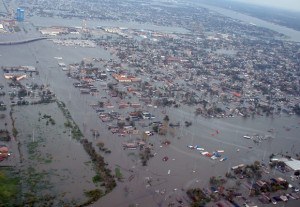According to new research by the Insurance Institute for Business & Home Safety, stronger building codes and standards, along with more stringent requirements for inspections, building permits, and contractor licensing, all have contributed to safer, stronger roofs in coastal Alabama, Louisiana and Mississippi, since Katrina tore into the region 10 years ago.
“IBHS has excellent news to report about the coastal areas in Alabama, Louisiana, and Mississippi in our new study, Katrina 10 Years Later: Improving the Resilience of Roofing in the Gulf States,” said Julie A. Rochman, IBHS president and CEO.

Many things have changed along the Gulf Coast since Katrina, including enactment of stronger building codes, standards and requirements in a number of areas. IBHS examined changes specific to roofing requirements by evaluating and analyzing several key aspects of roofing regulations, including codes, contractor licensing, permits and inspections.
A key finding in the study is that building codes in these areas have substantially improved, with 100 percent of surveyed jurisdictions currently enforcing either the 2012 or 2009 edition of the International Residential Code. Prior to Katrina, only about one-third (36 percent) of coastal communities surveyed were known to enforce the IRC.
The study also found more than half the jurisdictions surveyed (23) now require some type of licensing or registration for roofers, which is critical to prevent work being performed by people not qualified to do so. In addition, 38 percent of jurisdictions surveyed were known to require permits for re-roofing projects prior to Katrina; today, this number has nearly doubled to 70 percent.
“The roof is a building’s first line of defense against high winds,” Rochman said. “Yet, sadly, it is also often the most vulnerable building system. Even if a home or commercial structure has excellent window and other opening protection, if the roof suffers damage from a hurricane or severe thunderstorm, that building easily can be transformed into a big bucket, allowing punishing wind and water inside,” Rochman explained. “Unfortunately, many homes and businesses during Hurricane Katrina suffered roof damage that cascaded into truly devastating losses.”
The storm’s devastation was so horrific the name “Katrina” has been retired and will never be used again by the National Weather Service. Rochman noted that “the people and communities impacted by Katrina will always refer to life as ‘before the storm’ and ‘after the storm’. That last weekend in August 2005 was a defining moment for Alabama, Louisiana and Mississippi, which taught us many lessons. We not only must learn them, but also teach them to others who are similarly vulnerable, so they can take action to protect themselves before another storm strikes. That is the very least we owe to those who lost their lives, their loved ones, their homes, and their businesses.”
“There are practical steps all jurisdictions in hurricane-prone areas can take to improve the ability of residential roof systems to protect against high winds and wind-driven water intrusion,” Rochman said. “Based on many years of pre- and post-disaster field investigation, as well as unique, rigorous building science conducted at the IBHS Research Center, our scientists and engineers have provided a number of specific recommendations in the new post-Katrina study for any coastal community exposed to hurricane risk.”
In addition to enactment and enforcement of the latest building codes, IBHS recommendations for hurricane-exposed communities include adoption of IBHS FORTIFIED Home–Hurricane superior roofing construction standards, which provide increased resilience through stronger construction techniques, and are specifically developed for these locations.
“While hurricanes will continue to threaten coastal areas year after year, there is no reason to allow homes and businesses to remain vulnerable to damage from even relatively low-level storms. We must break this cycle of destruction, and we have the scientific knowledge to build and retrofit safer, stronger homes that are more hurricane-resistant. Now all we need is the determination to make this happen,” Rochman concluded.
Source: IBHS
Was this article valuable?
Here are more articles you may enjoy.

 Rare Weather Warning Issued as Strong Gusts Fuel Colorado Wildfire Threats
Rare Weather Warning Issued as Strong Gusts Fuel Colorado Wildfire Threats  Marijuana’s Move to Schedule III: What it Really Means for Cannabis Insurance
Marijuana’s Move to Schedule III: What it Really Means for Cannabis Insurance  Trump Sues BBC for $10 Billion Over Documentary Edit
Trump Sues BBC for $10 Billion Over Documentary Edit  LA Fires Push Insurers’ 2025 Disaster Losses to $107 Billion
LA Fires Push Insurers’ 2025 Disaster Losses to $107 Billion 